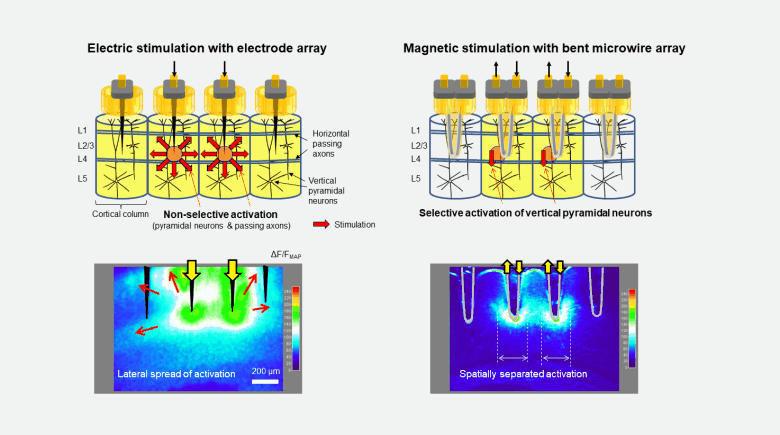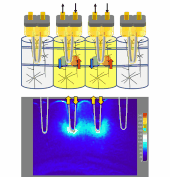
Cortical neural prostheses that aim to restore useful vision, hearing, and tactile sensations require the ability to selectively target different cortical regions simultaneously. Electrical stimulation via intracortical electrodes has been used to create spatial patterns of cortical activation. However, their efficacy remains limited due to the inability of conventional electrodes to confine activation to specific cortical regions around each electrode. Magnetic stimulation from single bent wires can selectively activate pyramidal neurons while avoiding passing axons, thereby confining activation to small cortical regions. This work presents a novel bent flat microwire array and demonstrates its effectiveness for selective activation of cortical columns in mouse brain slices.
A computational model was developed to compare the spatial resolution of magnetic stimulation from bent wire arrays with 280 and 530 µm tip spacings. The same array designs were fabricated for use in electrophysiological experiments, i.e., calcium imaging (GCaMP6s) of mouse brain slices.
All fabricated array designs reliably produced spatially discrete cortical activations at low stimulus amplitudes, but the 280-µm-spacing produced strong interference (constructive or destructive) at high stimulus amplitudes, thereby resulting in single strong activations or two asymmetric activations. 4-channel bent wire arrays with spacing of 340 µm avoided the interference and produced clearer spatial patterns of activation than electrodes.
Bent wire array designs can influence the strength and the spatial resolution of multichannel magnetic stimulation. These results suggest that bent microwire arrays can enhance the selectivity of multichannel stimulation of brain and therefore may help to develop reliable and effective cortical neural prostheses.

